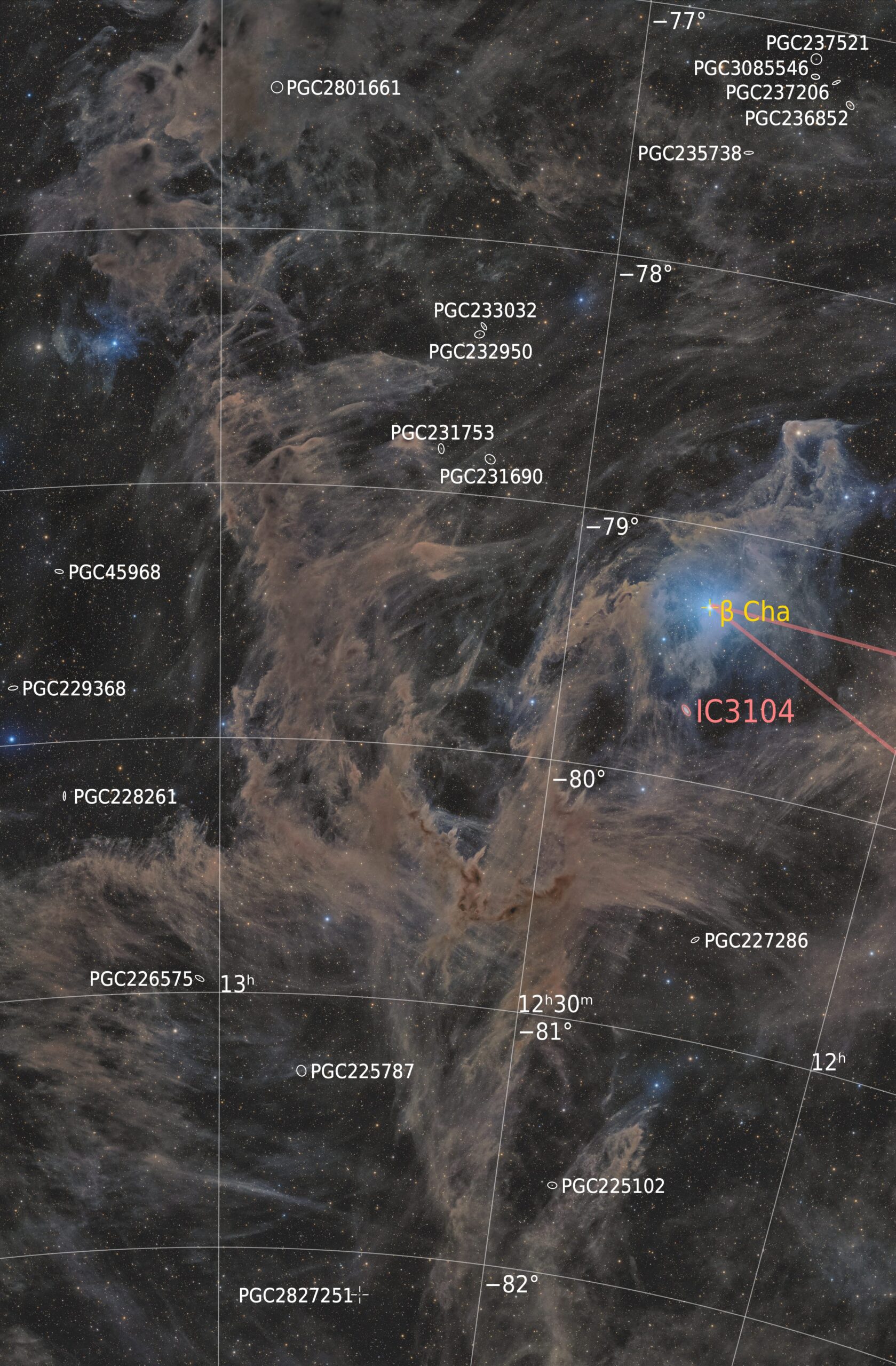Second Light from Deep Space Remote Observatories | Swan Reach, South Australia
We’re proud to unveil the second official image captured from our newly operational Deep Space Remote Observatories (DSRO) in Swan Reach, South Australia with a striking view of the Chamaeleon III Dark Cloud, one of the more mysterious regions within the Chamaeleon molecular cloud complex.
Located approximately 490 to 590 light-years from Earth, this complex is one of the closest dark nebulae in our galactic neighbourhood and provides a unique laboratory for studying the earliest phases of star formation. The Chamaeleon complex is split into three major subregions: Chamaeleon I, II, and III. While the first two are bustling with activity, forming stars, protostars, and Herbig-Haro objects, Chamaeleon III remains remarkably quiet.
This dark cloud is composed primarily of cold molecular hydrogen (H₂) and interstellar dust, the latter of which absorbs and scatters background starlight, rendering the cloud visually opaque. Despite its relative silence, infrared and submillimetre surveys (e.g., Spitzer, WISE, APEX, ALMA) have revealed numerous starless cores, hinting at dormant potential.
Imaging Details
Captured over multiple nights under pristine southern skies, this image combines more than 10 hours of total integration time using broadband filters to bring out subtle variations in dust density and structure.
DSRO Australia Team: Steve Mandel | Steeve Body | Bob Fera


